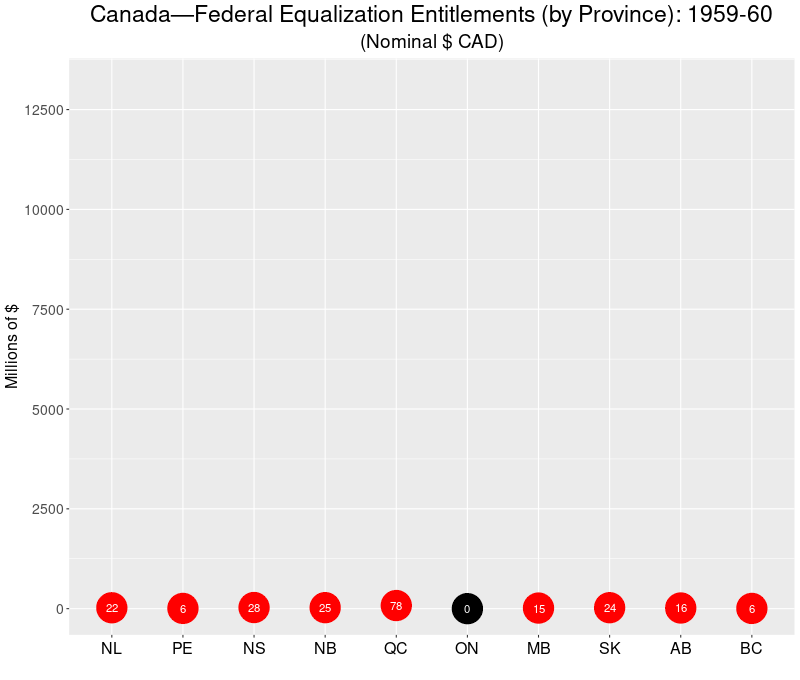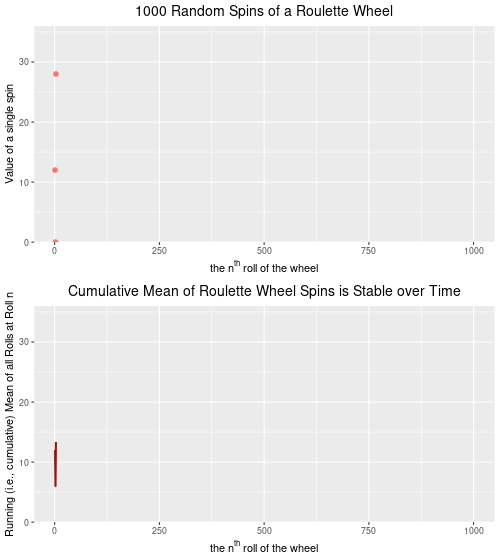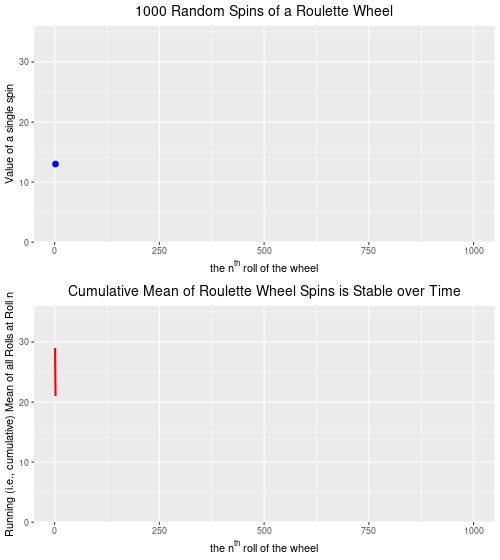As I have noted in previous versions of this data visualization series, standard electoral-result area maps often obfuscate and mislead/misrepresent rather than clarify and illuminate. This is especially the case in electoral systems that are based on single-member electoral districts in which there is a single winner in every district (as known as ‘first-past-the-post’). Below you can see an example of a typical map used by the media (and others) to represent an electoral outcome. The map below is a representation of the results of the 2019 Canadian Federal Election, after which the incumbent Liberal Party (with Justin Trudeau as Prime Minister) was able to salvage a minority government (they had won a resounding majority government in the 2015 election).
There are two key guiding constitutional principles of representation regarding Canada’s lower house of parliament—the House of Commons: i) territorial representation, and ii) the principle of one citizen-one vote. As of the 2019 election these principles, combined with other elements of Canadian constitutionalism (like federalism) and the course of political history, have created the current situation in which the 338 federal electoral districts vary not only in land area, but also in population size, and often quite dramatically (for a concise treatment on this topic, click here).
Because a) “land doesn’t vote,” and b) we only know the winner of each electoral district (based on the colour) and not how much of the vote this candidate received) the map below misrepresents the relative political support of parties across the country. As of 2016, more than 2/3 of the Canadian population lived within 100 kilometres of the US border, a total land mass that represents only 4% of Canada’s total.
I’ve created a map that splits Canada in two—each colour represents 50% of the total Canadian population. You can see how geographically-concentrated Canada’s population really is.
The electoral ridings in red account for half of Canada’s population, while those in light grey account for the other half. Keep this in mind whenever you see traditional electoral maps of Canada’s elections.
## This is code for the first map above. This assumes you
## have crated an sf object named can_sf, which has these
## properties:
```
Simple feature collection with 6 features and 64 fields
Geometry type: MULTIPOLYGON
Dimension: XY
Bounding box: xmin: 7609465 ymin: 1890707 xmax: 9015737 ymax: 2986430
Projected CRS: PCS_Lambert_Conformal_Conic
```
library(ggplot2)
library(sf)
library(tidyverse)
gg.can <- ggplot(data = can_sf) +
geom_sf(aes(fill = partywinner_2019), col="black", lwd=0.025) +
scale_fill_manual(values=c("#33B2CC","#1A4782","#3D9B35","#D71920","#F37021","#2B2D2F"),name ="Party (2019)") +
labs(title = "Canadian Federal Election Results \u2013 October 2019",
subtitle = "(by Political Party and Electoral District)") +
theme_void() +
theme(legend.title=element_blank(),
legend.text = element_text(size = 16),
plot.title = element_text(hjust = 0.5, size=20, vjust=2, face="bold"),
plot.subtitle = element_text(hjust=0.5, size=18, vjust=2, face="bold"),
legend.position = "bottom",
plot.margin = margin(0.5, 0.5, 0.5, 0.5, "cm"),
legend.box.margin = margin(0,0,30,0),
legend.key.size = unit(0.65, "cm"))
ggsave(filename="can_2019_all.png", plot=gg.can, height=10, width=13)
Here is the code for the 50/50 map above:
#### 50% population Map
gg.50 <- ggplot(data = can_sf) +
geom_sf(aes(fill = Land.50.Pop.2016), col="black", lwd=0.035) +
scale_fill_manual(values=c("#d3d3d3", "red"),
labels =c("Electoral Districts with combined 50% of Canada's Population",
"Electoral Districts with combined other 50% of Canada's Population")) +
labs(title = "Most of Canada's Land Mass in Uninhabited") +
theme_void() +
theme(legend.title=element_blank(),
legend.text = element_text(size = 11),
plot.title = element_text(hjust = 0.5, size=16, vjust=2, face="bold"),
legend.position = "bottom", #legend.spacing.x = unit(0, 'cm'),
legend.direction = "vertical",
plot.margin = margin(0.5, 0.5, 0.5, 0.5, "cm"),
legend.box.margin = margin(0,0,0,0),
legend.key.size = unit(0.5, "cm"))
# panel.border = element_rect(colour = "black", fill=NA, size=1.5))
ggsave(filename="can_2019_50_pct_population.png", plot=gg.50, height=10, width=13)








You must be logged in to post a comment.